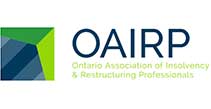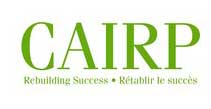Qualifying for a Consumer Proposal and Understanding the Process.
What’s a Consumer Proposal

A consumer proposal is a financial solution that allows individuals in Canada who are facing financial difficulties to propose a repayment plan to their creditors.
This process can provide a number of benefits, including the avoidance of bankruptcy, reduced interest and penalties. The proposal allows you to keep all your assets including homes or cars.
However, not everyone can qualify for a consumer proposal, and there are certain criteria that must be met.
Qualifying for a Consumer Proposal
In order to be considered eligible for a consumer proposal, certain qualifications must be met by the individual.
These qualifications, or criteria, include:
- Unsecured Debt:
- A consumer proposal can only be used for unsecured debts, such as credit card debt, personal loans, and taxes. The total amount of unsecured debt must be less than $250,000, excluding mortgage debt.
- Insolvency:
- The individual must be insolvent, meaning that their liabilities are greater than their assets, they are unable to repay their debts as they come due.
- Resident of Canada:
- The individual must be a resident of Canada to qualify for a consumer proposal.
- No previous proposals:
- The individual must not have previously filed a consumer proposal or gone through bankruptcy.
- Seeking professional help:
- It is essential to work with a Licensed Insolvency Trustee (LIT) to draft and file the proposal with the Office of the Superintendent of Bankruptcy (OSB) and guiding through the process.
It is important to note that meeting these criteria does not guarantee the acceptance of the consumer proposal, and the final decision is up to the creditors who are presented with the proposal.
What is Insolvency
In Canada, insolvency refers to a financial situation where an individual or business is unable to meet their financial obligations as they come due.
This can occur when the individual or business’s liabilities (debts) exceed their assets. Insolvency can take many forms and can affect both individuals and businesses.
For individuals, it can mean not being able to pay credit card bills or mortgages, while for businesses it can mean not being able to pay suppliers or employees.
When an individual is insolvent, it can qualify them for different debt relief options such as consumer proposal or bankruptcy.
What is Unsecured Debt
In Canada, unsecured debt refers to debt that is not backed by collateral, meaning that the creditor does not have a claim on a specific asset of the borrower in case of non-payment.
This type of debt includes credit card debts, personal loans, certain taxes, and some medical bills.
Unsecured debt is different from secured debt, which is debt that is backed by an asset, such as a mortgage or a car loan. Creditors of unsecured debt typically have less legal protection and remedies in case of non-payment compared to creditors of secured debt.
Consumers who have unsecured debt can consider debt relief options such as consumer proposal or bankruptcy to help them manage and pay off the debt.




Comments are closed.